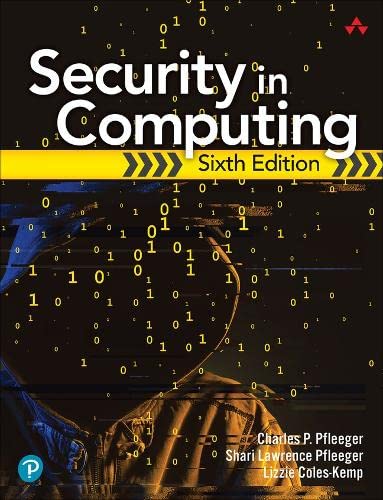

Most ebook files are in PDF format, so you can easily read them using various software such as Foxit Reader or directly on the Google Chrome browser.
Some ebook files are released by publishers in other formats such as .awz, .mobi, .epub, .fb2, etc. You may need to install specific software to read these formats on mobile/PC, such as Calibre.
Please read the tutorial at this link: https://ebookbell.com/faq
We offer FREE conversion to the popular formats you request; however, this may take some time. Therefore, right after payment, please email us, and we will try to provide the service as quickly as possible.
For some exceptional file formats or broken links (if any), please refrain from opening any disputes. Instead, email us first, and we will try to assist within a maximum of 6 hours.
EbookBell Team

4.8
54 reviewsSecurity in Computing, Sixth Edition, is today's essential text for anyone teaching, learning, and practicing cybersecurity. It defines core principles underlying modern security policies, processes, and protection; illustrates them with up-to-date examples; and shows how to apply them in practice. Modular and flexibly organized, this book supports a wide array of courses, strengthens professionals' knowledge of foundational principles, and imparts a more expansive understanding of modern security.
This extensively updated edition adds or expands coverage of artificial intelligence and machine learning tools; app and browser security; security by design; securing cloud, IoT, and embedded systems; privacy-enhancing technologies; protecting vulnerable individuals and groups; strengthening security culture; cryptocurrencies and blockchain; cyberwarfare; post-quantum computing; and more. It contains many new diagrams, exercises, sidebars, and examples, and is suitable for use with two leading frameworks: the US NIST National Initiative for Cybersecurity Education (NICE) and the UK Cyber Security Body of Knowledge (CyBOK).
• Core security concepts: Assets, threats, vulnerabilities, controls, confidentiality, integrity, availability, attackers, and attack types
• The security practitioner's toolbox: Identification and authentication, access control, and cryptography
• Areas of practice: Securing programs, userinternet interaction, operating systems, networks, data, databases, and cloud computing
• Cross-cutting disciplines: Privacy, management, law, and ethics
• Using cryptography: Formal and mathematical underpinnings, and applications of cryptography
• Emerging topics and risks: AI and adaptive cybersecurity, blockchains and cryptocurrencies, cyberwarfare, and quantum computing